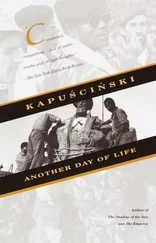George Dow - Every Day Life in the Massachusetts Bay Colony
Здесь есть возможность читать онлайн «George Dow - Every Day Life in the Massachusetts Bay Colony» — ознакомительный отрывок электронной книги совершенно бесплатно, а после прочтения отрывка купить полную версию. В некоторых случаях можно слушать аудио, скачать через торрент в формате fb2 и присутствует краткое содержание. Жанр: foreign_antique, foreign_prose, на английском языке. Описание произведения, (предисловие) а так же отзывы посетителей доступны на портале библиотеки ЛибКат.
- Название:Every Day Life in the Massachusetts Bay Colony
- Автор:
- Жанр:
- Год:неизвестен
- ISBN:нет данных
- Рейтинг книги:3 / 5. Голосов: 1
-
Избранное:Добавить в избранное
- Отзывы:
-
Ваша оценка:
- 60
- 1
- 2
- 3
- 4
- 5
Every Day Life in the Massachusetts Bay Colony: краткое содержание, описание и аннотация
Предлагаем к чтению аннотацию, описание, краткое содержание или предисловие (зависит от того, что написал сам автор книги «Every Day Life in the Massachusetts Bay Colony»). Если вы не нашли необходимую информацию о книге — напишите в комментариях, мы постараемся отыскать её.
Every Day Life in the Massachusetts Bay Colony — читать онлайн ознакомительный отрывок
Ниже представлен текст книги, разбитый по страницам. Система сохранения места последней прочитанной страницы, позволяет с удобством читать онлайн бесплатно книгу «Every Day Life in the Massachusetts Bay Colony», без необходимости каждый раз заново искать на чём Вы остановились. Поставьте закладку, и сможете в любой момент перейти на страницу, на которой закончили чтение.
Интервал:
Закладка:
Just one more inventory – the estate of William Clarke who died in 1647 in Salem. The parlor contained a half-headed bedstead with curtains and vallance which was furnished with a feather bed and bolster, a straw bed and flock bolster, white blankets, sheets, and a green rug. In a corner of this parlor stood another bedstead having a mat, canvas flock bed, sheets, old blankets and a red rug, and in the chamber over the kitchen was a low bedstead with a flock bed and bolster, a blanket, a rug and an old quilt.
Here are two kinds of bedsteads mentioned in this house, but there were other kinds in frequent use at the time: high beds and side beds, canopy bedsteads, half-headed, joined, cabin, corded, close, press, standing, truckle and trundle bedsteads and what is strange indeed, not a single example of these early bedsteads has been preserved. All have been worn out or destroyed – supplanted by a newer fashion – and we today can only imagine their various forms and decorations.
In the New England vernacular, materials for quilts were "skurse" in the olden times. The settlers, of course, brought all their furnishings from England and a few years elapsed before wool and flax were produced here in any quantity. Meanwhile all fabrics were imported and paid for by shipments of salt fish, furs, lumber, corn, etc. A brisk trade soon sprang up with the West Indies and Spain and cotton was brought into the New England ports. Some of the fabrics in common use before 1650 have names that sound strangely in our ears. Darnacle has been mentioned. There were baize for jackets, calico for dresses, linsey woolsey for heavy skirts, serge for various articles of clothing, coifing stuff for caps, linen for forehead bands and many other uses, dimity for bed hangings and petticoats, and a fabric known as "barber's stuff." In time some of these materials became available for quilt making and at a still later time the handwoven, home-dyed fabrics were used and some of these were rudely decorated with tied and dipped patterns or stamped and stencilled designs.
It should always be kept in mind, however, that geographical location largely enters into the production and character of the quilt, and the family that was "well-off" of course would be supplied more abundantly with furnishings and be less dependent upon homely makeshifts and the daily practice of household economy. Those living in the seaport towns, where most of the shops were found, would be likely to follow the simplest course of fashion and buy from the stock just imported from England or Holland. The hand loom was found everywhere but more generally in the country. Weaving was a trade for men and so practiced, but many a farmhouse had its loom and every country home its spinning wheel. In the larger towns the dame of social position or comfortable means would devote her spare moments to needlework and embroidery, while in the country the housewives would make pieced quilts or patch the clothing of their numerous children.
It naturally follows, that the handwoven coverlet, should be a product of the country rather than the town and usually of the countryside farthest removed from the influences of the shop and of English goods. Even today it is still woven in the remote settlements of Eastern Kentucky and Tennessee, and judging from existing examples the vogue of the handwoven coverlet was greater in New York, Pennsylvania, Kentucky and the Middle West than in New England although many fine examples were produced here. The manufacture of the patchwork quilt as a domestic art also seems to have reached its highest development in the Middle West during the first half of the nineteenth century.
The patchwork quilt of New England is known as the "pieced quilt" when made in the Middle West and more correctly so, for to piece means to join together separate pieces of like material into sections or blocks that in turn are united to form the top of the quilt. The pieces usually are of uniform shape and size and contrasting colors are blended to form the design – usually a geometric pattern. These pieces are sewed "over and over" on the wrong side. To patch means to mend or adorn by adding a patch or by laying over a separate piece of cloth. The French word applique well describes the patched or laid-on work where the design is cut out and applied or sewed on, in fact, "sewed-on quilts" and "laid quilts" are old terms. This type of quilt is found in New England but infrequently as compared with the "pieced quilt," here commonly known as the "patchwork quilt."
In early times the pieces were nearly always of a woolen fabric, the brighter colored cloth being saved for the more central portions of the design. Every scrap and remnant of material left from the making of garments was saved and the best pieces of worn-out garments were carefully cut out and made into quilt pieces. The historian of the Saco Valley, Maine, relates that a scarlet broadcloth cloak formerly worn by a Lord Mayor of London and brought to Massachusetts by a member of the Merritt family of Salisbury, Mass., after many adventures ended its days as small bits of vivid color in a patchwork quilt made in Maine. Portions of discarded military uniforms, of flannel shirts and well-worn petticoats were utilized and frequently an old blanket would be used for lining.
CHAPTER V
Concerning Their Apparel
In 1630 there were differences in dress even more so than at the present time. The simple, coarse clothing of the yeoman and the worker in the various trades was far removed from the dress of the merchant and the magistrate. Leather clothing was very generally worn by laborers and servants as deerskins were cheap and leather had been in common use for jerkins and breeches in Old England, so naturally it was worn here. Stockings were made of a variety of materials and most shoes had wooden heels.
Higher in the social scale men wore doublets and full breeches and clothed themselves as well as their estates permitted – sometimes even better than they could well afford. Sleeves were slashed. Falling bands at the neck were common and a deep linen collar appears in portraits of the period. A beaver or felt hat with steeple crown was worn, and gloves, sometimes elegantly embroidered, were essential. The accepted idea of Puritan dress should be revised and the Victorian standard of sentimental simplicity be discarded. There was great variety of fabrics available in the shops of London and Bristol as will be noted in the list at the end of this chapter, and as wealth permitted probably much of this material eventually found its way to the shelves of the shopkeepers in Boston and other of the larger seaport towns.
The following list of clothing each man should provide himself with on sailing for New England in 1629, when the Rev. Francis Higginson came over, is so specific that we can easily visualize the male company that arrived at Salem that year.
Note. As several excellent books are available that treat exclusively of costume in the colonies, it has not seemed necessary to elaborate on the subject in these pages. The following notes however, are thought to be of interest.
4 peares of shoes.
4 peares of stockings.
1 peare Norwich gaiters.
4 shirts
2 suits dublet and hose of leather lyn'd with oy'd skin leather, ye hose & dublett with hooks & eyes.
1 suit of Nordon dussens or hampshire kersies lyn'd the hose with skins, dublets with lynen of gilford or gedlyman kerseys.
4 bands
2 handkerchiefs
1 wastecoat of greene cotton bound about with red tape
1 leather girdle
1 Monmouth cap
1 black hatt lyned in the brows with lether
5 Red Knitt capps mill'd about 5d. apiece
2 peares of gloves
1 Mandillion [mantle or great coat] lyned with cotton
1 peare of breeches and waistcoat
Читать дальшеИнтервал:
Закладка:
Похожие книги на «Every Day Life in the Massachusetts Bay Colony»
Представляем Вашему вниманию похожие книги на «Every Day Life in the Massachusetts Bay Colony» списком для выбора. Мы отобрали схожую по названию и смыслу литературу в надежде предоставить читателям больше вариантов отыскать новые, интересные, ещё непрочитанные произведения.
Обсуждение, отзывы о книге «Every Day Life in the Massachusetts Bay Colony» и просто собственные мнения читателей. Оставьте ваши комментарии, напишите, что Вы думаете о произведении, его смысле или главных героях. Укажите что конкретно понравилось, а что нет, и почему Вы так считаете.












